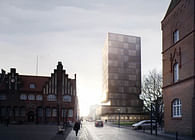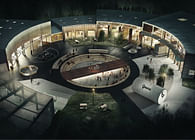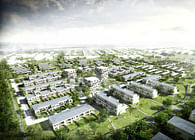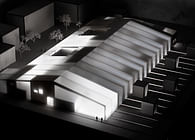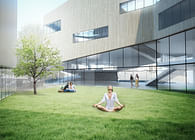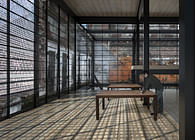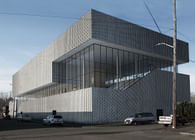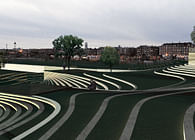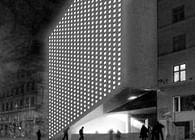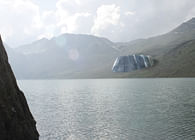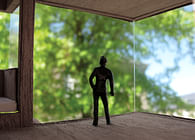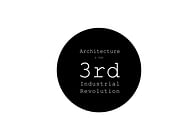
A Democratic & Disruptive Innovation Lab in the Third Industrial Revolution
Throughout history, the architectural discourse has been closely related to cultural, social, economic and technological changes in society.
Today, fascination with the post-industrial landscapes, preservation and sustainable design is at an all time high, while at the same time, a rapidly accelerating change in society and technology is radically changing the world at an unprecedented rate, and advancement in communication technology, digital design and manufacturing has, according to some, initiated a Third Industrial Revolution.
Considering the profound impact that the First and Second Industrial Revolution had, not only on architecture, but on almost every aspect of life, if a Third Industrial Revolution is indeed on the rise, it presents a new spatial, temporal and socio-economic dynamic which architecture is inherently inseparable from.
As globalization, technology and disruptive innovation displace jobs and leave behind empty buildings as their programmatic and spatial organisation have become redundant, new industries, markets and economies also emerge, requiring new programmatic and spatial relations, demanding an appropriate response from architecture.
Historically, the industries have acted as a driver for social, economic, technological and cultural change, and the industrial buildings have served as a platform for architects to experiment with new programmatic relations, architectural expressions and materials, often serving as frontrunners and inspiration for future architects. Furthermore, the factories have generally reflected the socio-economic model of current society.
In recent years, increasingly sophisticated CAD/CAM tools such as CNC-routing, laser-cutting and 3D-printing have dramatically decreased in cost, thus finding new ways of application in both industrial and private use as they become increasingly accessible. The internet is transforming information media and the way we communicate, interact socially and share knowledge.
There is evidence to suggest that the “factory” of tomorrow is something much more open, multidisciplinary, flexible, social and democratic, with a focus on disruptive innovation, customization, prototyping and local production, rather than raw mass-production capacity and efficiency.
Meanwhile, in this world of accelerating change, the time between construction, preservation and programmatic reinvention is compressing, so where does architecture position itself on the notion of the permanence of construction versus temporary use?
Complete transformation of old buildings to new demands can in some cases prove expensive, challenging and inflexible... Could newly built buildings be designed in such a way that they are spatially prepared for an entirely different future program?
This project seeks to examine the above themes through an exploration of what an industrial building of the Third Industrial Revolution could be, in terms of spatial performance and experience, material quality, programmatic requirements and organization, and how architecture could accommodate this accelerating change in society.
- Chris Gotfredsen, 2014
Status: School Project
Location: Copenhagen, DK
Additional Credits: Finn Selmer, Thesis Advisor.
Thesis Review Panel: Lone Wiggers (C.F. Møller, partner), Torsten Stephensen (Vilhelm Lauritzen Architects, partner), Johnny Svendborg (Svendborg Architects, founder/owner), Finn Selmer.
